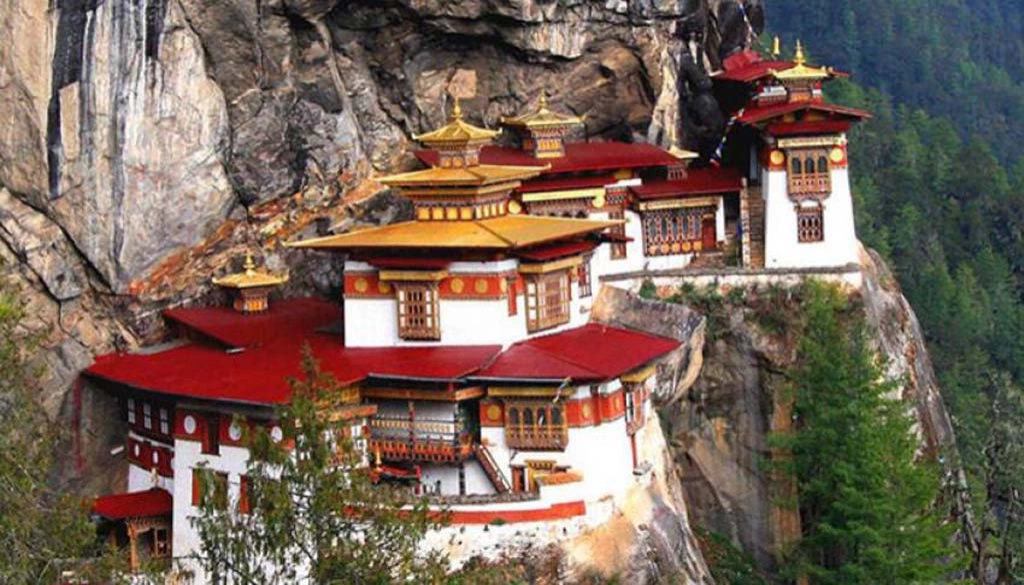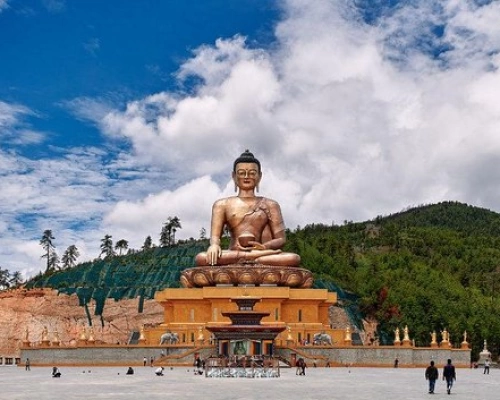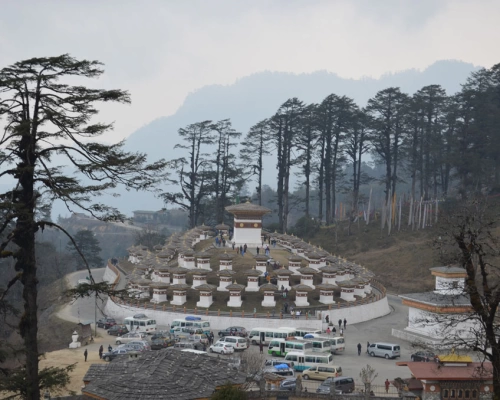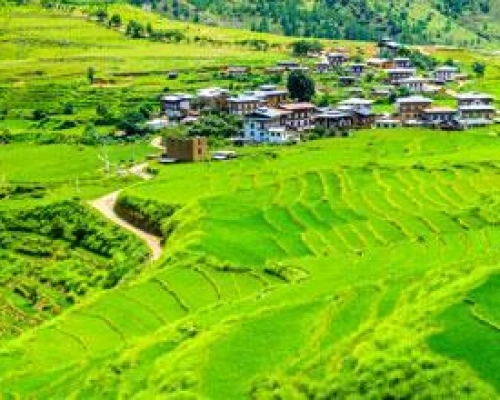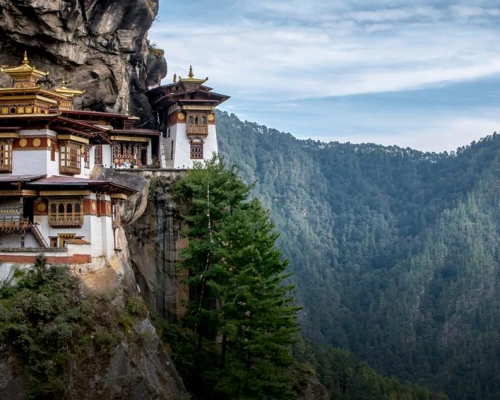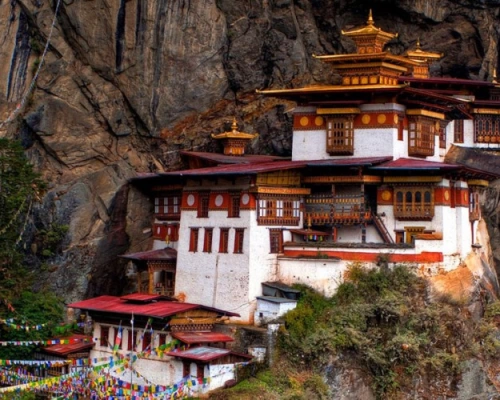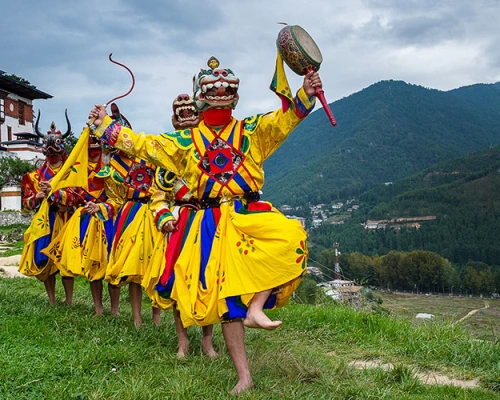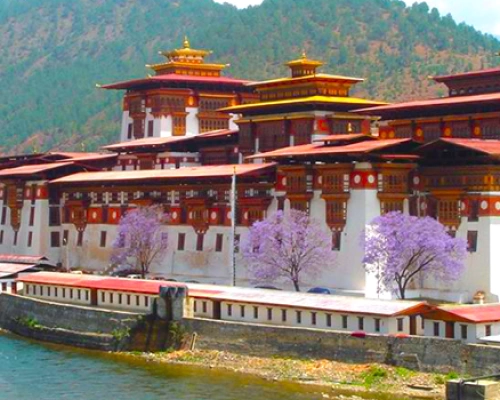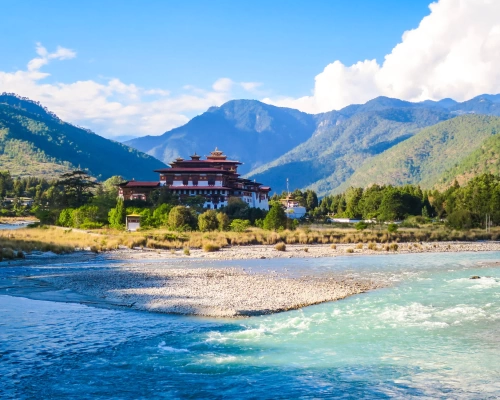This popular Bhutan cultural tour provides an in-depth view into the ancient way of life and rich culture that still thrives in Bhutan today through the western valleys of Paro, Thimphu, Punakha and Wangduephodrang. It is a well paced tour, designed to provide the opportunity to really savour the unique highlights of Bhutan’s western districts which offer diverse mountainous landscapes, a rich Buddhist heritage including monasteries, temples and chortens, historical fortresses and an extremely hospitable people. You will discover the vibrant history of Bhutan visiting the Ta Dzong Museum, Rimpong Dzong with its wooden cantilevered bridge and the infamous Taktsang Monastery (Tiger’s Nest) in the beautiful Paro Valley. In Bhutan’s capital, Thimphu, you will visit the The National Memorial Chorten, 12th century Changangkha Temple and the National Library exhibiting ancient scriptures before crossing the 3050m Dochula Pass with its 108 chortens, numerous prayer flags and spectacular Himalayan views into the sub-tropical Punakha Valley featuring the incredible Punakha Dzong and Chimi Lhakang, temple of the ‘Divine Madman’.
Discover Bhutan Tour - 5 Days
- Duration 5 Days
- Trip Grade Easy
- Starts/Ends Bhutan to Bhutan
- Group Size 1-10
- Best Season March, April, May and September, October, November
Itinerary
The flight to Paro is one of the most spectacular mountain flights in the world, with a constantly changing panorama of some of the highest mountains on earth. Our representative will meet you at Paro airport exit doors following customs formalities.
After lunch enjoy afternoon sightseeing around Paro, including a visit to the Ta Dzong Museum housing many religious relics, works of art and handicrafts offering a great orientation into Bhutan’s historical, cultural, and religious past. Next, visit the Rimpong Dzong to see the painting of the great saint Milarepa, considered as the master of meditation by the Bhutanese and believed to have attained enlightenment in a lifetime. Dzong’s are large monasteries and district administrative centres, which were once strategic forts. Afterwards, drive to the capital, Thimphu (1.5 hours) following the Pachu River. Before dinner at the hotel there will be an orientation on Bhutanese etiquette by your guide. Overnight at your hotel in Thimphu.
Today’s half day of sightseeing in Thimphu and other half in Punakhara valley includes visits to:
* Folk Heritage Museum: a restored mid-19th century house which gives one insight into the average household & lifestyle in the region during that era. The house replicates a traditional farmhouse and is furnished as it would have been about a century ago.
* Takin Preservation Center: Visit Takin Preservation Center where Bhutan’s National Animal is being preserved.
* Changangkha lhakhang founded in the 13th century by one of the most revered saint of the drukpa kadgued tradition, Lama Phajo Dugom. It is a focus of daily worship for many local residents.
* Traditional paper factory for wide range of Bhutanese papers.
After Lunch drive over the Dochu-La pass (3,100 meters), which on a clear day offers an incredible view of Himalayan peaks before descending into balmy Punakha valley (about 3 hrs total driving time). The drive through the countryside affords a glimpse of everyday life in this most remote of Himalayan kingdoms. In the Dochu-La area there are vast Rhododendron forests that grow to tree size and bloom in late April/early May covering the mountains in a riot of glorious spring colour. After that drive to Punakha.
Punakha was the ancient capital of Bhutan. On arrival, visit Punakha Dzong, the “Palace of Great Happiness” built in 1637 by the Shabdrung, the ‘Unifier of Bhutan’ as predicted by the great Guru Rimpoche (Padmasambhava). It is situated at the confluence of the Mo Chu and Pho Chu (Mother and Father Rivers) and is the winter headquarters of the Je Khenpo and hundreds of monks who move en masse from Thimphu to this warmer location. The three story main temple of the Punakha Dzong is a breathtaking example of traditional architecture with four intricately embossed entrance pillars crafted from cypress and decorated in gold and silver. It was here on 17th December 1907, Bhutan’s first king was crowned.
After Lunch drive to Paro. Overnight at your hotel in paro.
After breakfast hike to Taktsang Monastery. The trail is broad and the walk of approximately 1.5 to 2 hours uphill takes you almost a kilometre above the Paro valley floor (for those who cannot hike we will arrange a horse for transfer up to cafeteria). The view of Taktsang Monastery built on a sheer cliff face 900 metres above the valley floor is a spectacular sight. The Monastery is also an important pilgrim site for the Buddhists. The great Guru Rimpoche is said to have flown here on the back of a tigress when he brought the teachings of the Buddhist Dharma to Bhutan in the 8th Century. He then mediated in a cave there for three months where the monastery was later built. The cave is said to be the origin of Buddhism in Bhutan. Nearby there is a teahouse where you can stop for refreshments before returning to Paro for lunch.
In the afternoon drive to the ruins of the 17th Century Drukgyel Dzong, an historic monument built by the Shabdrung to commemorate his victory against invading Tibetans in 1644. In fine weather the towering peak of the sacred Mount Jomolhari (7314m) appears as a stunning backdrop. On the return drive to Paro, visit 7th Century Kyichu Lhakhang, one of the 108 temples constructed by the Tibetan king Songtsen Gampo. Kyichu is built in a manner similar to the Jokhang in Lhasa. Inside there is a great golden image of Buddha Shakyamuni.
Alternatively, day 7 could be spent on a day trip to the Haa Valley, one of the most picturesque districts in Bhutan. Reached via the beautiful Chelila Pass, Haa Valley is characterised by its surrounding rugged and mountainous terrain. Overnight at your hotel in Paro.
Breakfast in the hotel and then drive to the airport for flight to your onward destination.
This itinerary is not suited for you? Plan your own trip.
What's Included
- 4 Nights at 3* hotel accommodation with WiFi (Luxury hotels will be charged separately)
- Personal specialized English speaking guide & driver with SUV
- Visa Fee
- Breakfast, Lunch & Dinner (excluding alcoholic drinks)
- Tea and Snacks
- All entrance fees & sightseeing including Monasteries & Dzongs etc
- All the transportation by private vehicle
- 100$ Bhutan Government daily royalties which goes for free education and free health services for the Bhutanese people, and other taxes
- Mineral water all time during the tour
- Airline Tickets
- Travel Insurance
- Meals, other than Mentioned
- Various expenses such as room service, beverages, personal calls, souvenirs, etc.
- Tips for Guide and Driver
Dates and Prices
| Date | Price | Availability | ||
|---|---|---|---|---|
| Start DateStarts: ThursdayApr 17, 2025 | End DateEnds: MondayApr 21, 2025 | PricePriceUS$1575 | StatusStatusAvailable | |
| Start DateStarts: MondayApr 21, 2025 | End DateEnds: FridayApr 25, 2025 | PricePriceUS$1575 | StatusStatusAvailable | |
| Start DateStarts: ThursdayApr 24, 2025 | End DateEnds: MondayApr 28, 2025 | PricePriceUS$1575 | StatusStatusAvailable | |
| Start DateStarts: MondayApr 28, 2025 | End DateEnds: FridayMay 02, 2025 | PricePriceUS$1575 | StatusStatusAvailable |
